From the Rainforest to Arizona in One Day
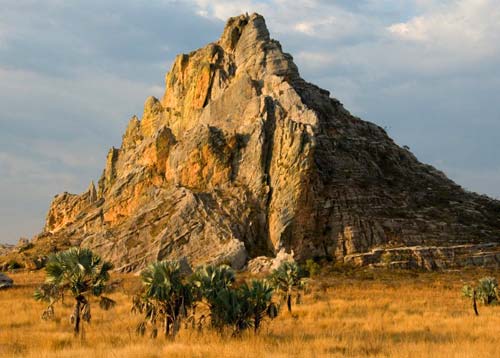
Isalo National Park
We set off from Setam Lodge in Ranomafana National Park at 8 AM for another major journey by minibus all the way to Isalo National Park which was toward the southwest on the way to the seacoast facing Africa. Our road trip would end around 5 PM when we finally turned into our lodging for that night and the next, the Relais de la Reine. The Relais is an exceptionally comfortable new inn consisting of comfortable bungalows set into a dramatic sandstone mesa. It reminded me of Sedona, Arizona, in particular the Enchantment Resort, for those of you who may know it. The principal construction material is local stone and the stonework is executed with great skill and a keen eye to achieving an artistic pattern. It’s stonework at its most skilled and would all but unaffordable at stonemason wages in the US. It only is possible here because the laborers are paid not paid very much. I’m not endorsing low wages. I’m simply stating the facts of the situation.
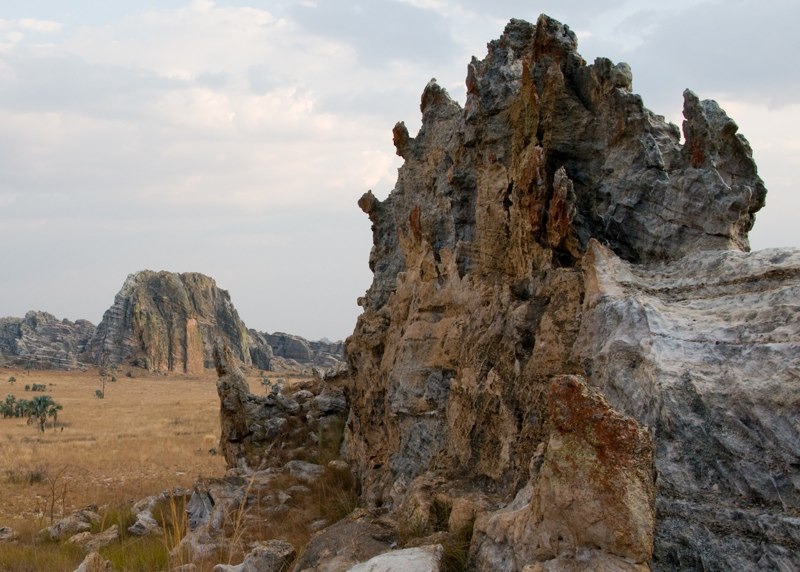 The journey would take us from the rainforest of Ranomafana, across part of the central plateau with its terraced fields, into the land of the inselbergs (enormous rock megaliths set in an otherwise flat and treeless landscape), then to the plains of Madagascar - prairie-like land so flat and devoid of trees that it looks like Kansas, and finally to a spectacularly beautiful region of sandstone outcroppings somewhat like the desert region in the US southwest. The big difference is that in Madagascar every region comes with a tropical character thrown in for no extra charge.
The journey would take us from the rainforest of Ranomafana, across part of the central plateau with its terraced fields, into the land of the inselbergs (enormous rock megaliths set in an otherwise flat and treeless landscape), then to the plains of Madagascar - prairie-like land so flat and devoid of trees that it looks like Kansas, and finally to a spectacularly beautiful region of sandstone outcroppings somewhat like the desert region in the US southwest. The big difference is that in Madagascar every region comes with a tropical character thrown in for no extra charge.
No question that the trip was long and tiring, but it was also spectacular - a sequence of dramatically contrasting landscapes compressed into a very short time. Picture setting out after breakfast from an Adirondack Mountain lodge in Upstate New York and traveling west and south, finally reaching Sedona, Arizona, ten hours later at sunset. It’s so much change in such a short time that it seems either surreal or a product only Disney would create. But it’s neither. It’s Madagascar.
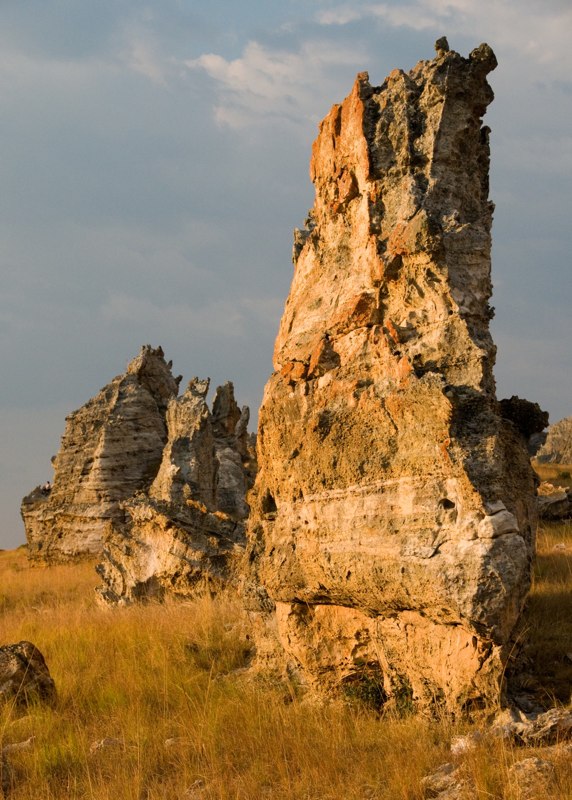 It’s a good thing this country is a long way from everywhere else. Its location has saved it from being overrun by tourists. The people who live here could use the income tourists would bring, to be sure, but it is wonderful to have the opportunity to experience this fascinating island before it is on everyone’s must-do list.
It’s a good thing this country is a long way from everywhere else. Its location has saved it from being overrun by tourists. The people who live here could use the income tourists would bring, to be sure, but it is wonderful to have the opportunity to experience this fascinating island before it is on everyone’s must-do list.
During the entire car trip, I sat in the front seat of the minibus alongside the driver. I was in a sort of photographer’s hyperspace. There were so many opportunities to compose good pictures that I thought I must be inhaling what Clinton claimed he didn’t at Oxford.
Along the way, we stopped at the second largest city in Madagascar, Fianarantsoa, to pick up some cookies, money from the ATM, and other supplies. Then we speeded on to Ambalavo, a small community known for the artisan workshop that produces handmade paper into which flower designs made of real flower parts are laminated and then dried and preserved. It actually was a charming shop with a small restaurant attached, perfect for a lunch stop.
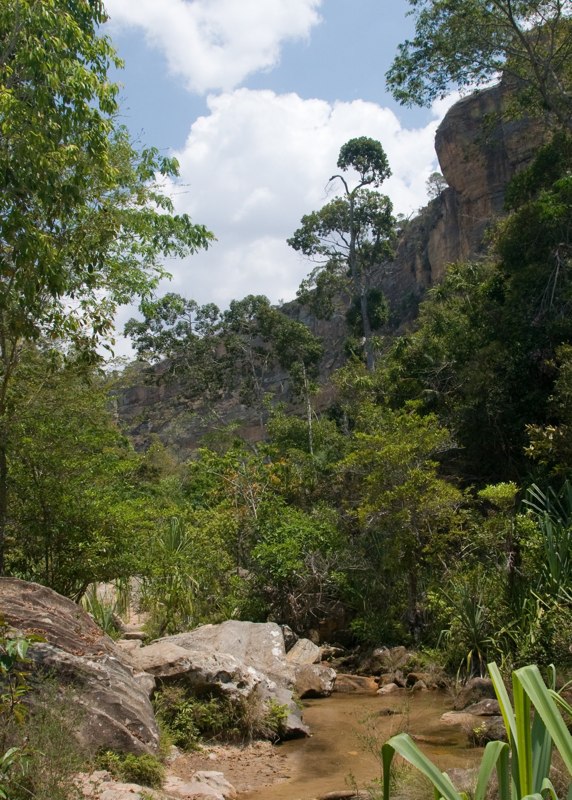 After lunch we continued on into a flat and arid zone with virtually no trees or vegetation to detract from the rock outcroppings. Along the way our guide, Vy, decided that we should stop at a very small village along the road, one of a dozen buildings at the most, all clustered around a shallow dug well. It was mid afternoon and the temperature was hot. The villagers were sitting in the shade of one of the larger huts. We greeted them, shared some of our cookie packets, and then had a tour of the village. As I have noted about other Malagasys, the people we met were friendly and welcoming. Despite the condition of the huts in which they lived - no running water, dirt floors, and no electricity - they were dressed very attractively in bright colors.
After lunch we continued on into a flat and arid zone with virtually no trees or vegetation to detract from the rock outcroppings. Along the way our guide, Vy, decided that we should stop at a very small village along the road, one of a dozen buildings at the most, all clustered around a shallow dug well. It was mid afternoon and the temperature was hot. The villagers were sitting in the shade of one of the larger huts. We greeted them, shared some of our cookie packets, and then had a tour of the village. As I have noted about other Malagasys, the people we met were friendly and welcoming. Despite the condition of the huts in which they lived - no running water, dirt floors, and no electricity - they were dressed very attractively in bright colors.
We saw a number of the small homes that were about as primitive as anything we could imagine. One in particular looked as if it had been deliberately destroyed. Its walls were rubble and its thatched roof sat a-kilter on the ground like the top of some giant fallen cake. Our guide explained to us that this house had belonged to a villager who had died recently. The custom is to destroy the house of a person after he or she has died.
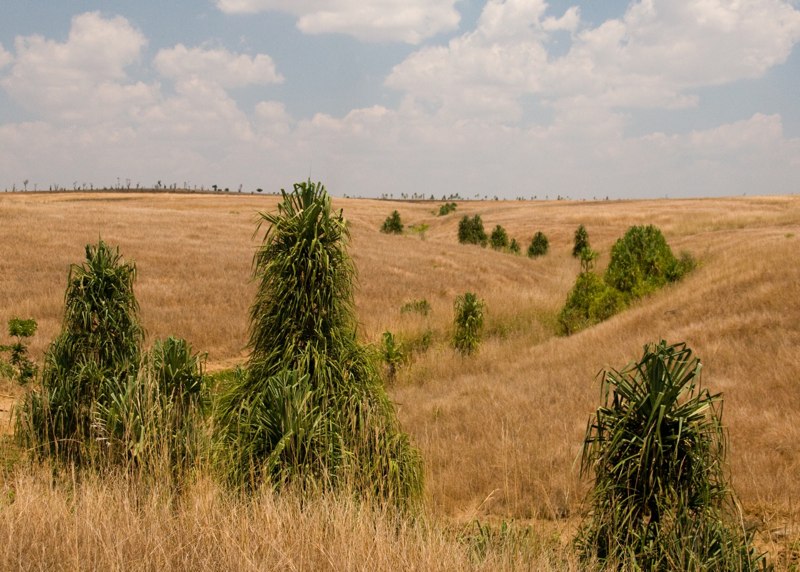 As we passed through small towns on this trip, we could see that many of the small shops had signs hanging outside that said “Orange: Recharges.” The explanation is simple. Most of the families in these towns do not have electricity in their homes, but they do have cellphones. They go to the shops with the signs to get their minutes topped up and their batteries recharged. It’s such a significant development. The society is jumping generations of communications development in western countries. There may be no electrical infrastructure and most families may have no electricity in their homes, yet they have individual cellphones that link them in telecommunications terms with their families and neighbors, and in theory with the world.
As we passed through small towns on this trip, we could see that many of the small shops had signs hanging outside that said “Orange: Recharges.” The explanation is simple. Most of the families in these towns do not have electricity in their homes, but they do have cellphones. They go to the shops with the signs to get their minutes topped up and their batteries recharged. It’s such a significant development. The society is jumping generations of communications development in western countries. There may be no electrical infrastructure and most families may have no electricity in their homes, yet they have individual cellphones that link them in telecommunications terms with their families and neighbors, and in theory with the world.
 Tomorrow is Sunday and we will be up early for a hike leaving at 7:30 AM. Then we clean up, have lunch, and hit the road for a several hour trip to the coast and our hotel in Tulear. I am hoping that the hotel we are going to will have high speed internet service so I can send our accumulated blogs and pictures off into cyberspace. Otherwise we have to wait to our return to Tana by air on Monday.
Tomorrow is Sunday and we will be up early for a hike leaving at 7:30 AM. Then we clean up, have lunch, and hit the road for a several hour trip to the coast and our hotel in Tulear. I am hoping that the hotel we are going to will have high speed internet service so I can send our accumulated blogs and pictures off into cyberspace. Otherwise we have to wait to our return to Tana by air on Monday.
Our trip is coming to an end. We have about a week left. What an adventure it has been so far!